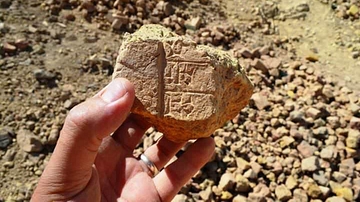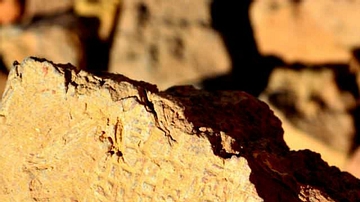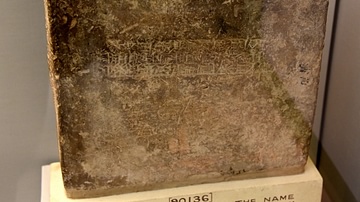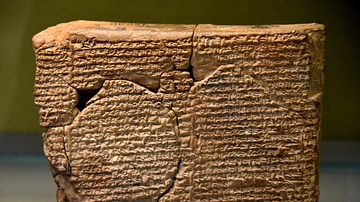Illustration
This door-slab came from the lower part of a flight of steps in the Temple of Ezida in Borsippa, part of the building works of the Babylonian king Nebuchadnezzar II (604-562 BCE). The recess is for a door-post. The pattern represents a carpet ornamented with rosettes.
The door slab has been cut in two and it may have have been relaid about 268 BCE under the Seleucid Greek emperor Antiochus I, the last ruler to have restored this temple.
Neo-Babylonian era, about 604-562 BCE. From Borsippa, Temple of Ezida, Mesopotamia, Iraq. (The British Museum, London)
About the Author
Cite This Work
APA Style
Amin, O. S. M. (2014, March 31). A bronze door-slab from Ezida Temple, Borsippa. World History Encyclopedia. Retrieved from https://www.worldhistory.org/image/2468/a-bronze-door-slab-from-ezida-temple-borsippa/
Chicago Style
Amin, Osama Shukir Muhammed. "A bronze door-slab from Ezida Temple, Borsippa." World History Encyclopedia. Last modified March 31, 2014. https://www.worldhistory.org/image/2468/a-bronze-door-slab-from-ezida-temple-borsippa/.
MLA Style
Amin, Osama Shukir Muhammed. "A bronze door-slab from Ezida Temple, Borsippa." World History Encyclopedia. World History Encyclopedia, 31 Mar 2014. Web. 23 Oct 2024.








